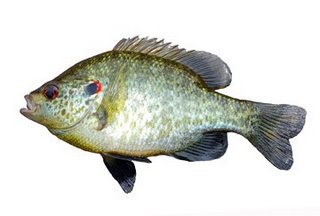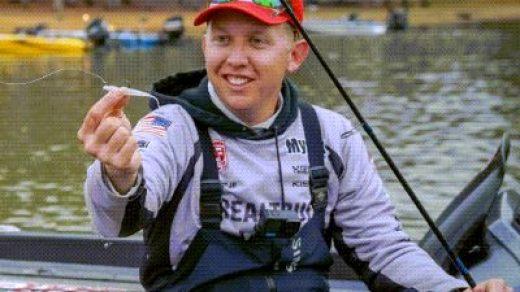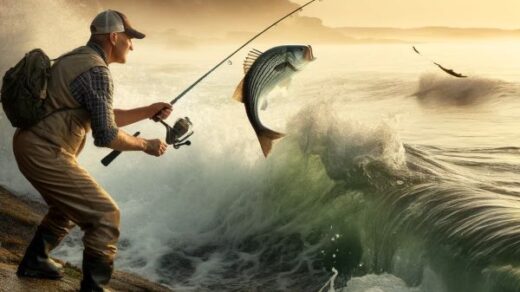The Art of Luring Shellcrackers

In the serene world of freshwater fishing, there exists a pursuit cherished by many anglers: the quest for the elusive shellcracker. These prized panfish, known for their spirited fights and delectable taste, inhabit the shallows of lakes, ponds, and rivers across the globe. Yet, for the uninitiated, coaxing these finicky creatures from their underwater hideouts can prove to be a challenging endeavor.
However, armed with the right knowledge and techniques, anglers can greatly enhance their chances of success on the water. Central to this pursuit is the art of bait selection – a nuanced process that hinges on understanding the preferences and behaviors of shellcrackers.
In this comprehensive guide, we delve into the world of shellcracker bait, exploring the various options available to anglers and shedding light on the strategies that can tip the odds in their favor. From natural baits to artificial lures, each offering its own allure, we unravel the mysteries of enticing these prized panfish to strike.
Join us as we unravel the secrets of shellcracker bait and embark on a journey to master the art of luring these elusive denizens of the deep.
Understanding Shellcrackers: A Brief Overview
Before delving into the intricacies of bait selection, it’s essential to gain a deeper understanding of the target species: the shellcracker. Also known as redear sunfish, shellcrackers (Lepomis microlophus) are a species of freshwater panfish native to the waters of North America. They are closely related to the more common bluegill and share many of their habits and habitats.
Shellcrackers earned their name from their specialized diet, which includes a penchant for feeding on snails, clams, and other mollusks found along the lake or river bottoms. Their unique jaw structure, equipped with crushing pads, allows them to crush the shells of their prey with remarkable efficiency. This dietary preference sets them apart from other panfish species and significantly influences their behavior and feeding habits.
During the spring spawning season, shellcrackers migrate to shallow waters, where they construct circular nests in sandy or gravelly substrates. These nests, often referred to as “beds,” serve as the breeding grounds for the species. Male shellcrackers vigorously defend these nests against intruders, including other fish and even unsuspecting anglers’ baits.
Shellcrackers are known for their cautious nature and selective feeding habits, which pose a challenge for anglers seeking to entice them with bait. Unlike more aggressive species, such as largemouth bass, shellcrackers often require a more subtle and finesse-based approach. Understanding their preferences and behavior is key to unlocking success on the water.
In addition to their dietary preferences, shellcrackers are also influenced by environmental factors such as water temperature, clarity, and seasonal changes. They tend to be more active during warmer months and may seek deeper waters during the heat of summer or colder depths in winter. Anglers must adapt their tactics accordingly, tailoring their bait selection and presentation to suit prevailing conditions.
Exploring Natural Baits for Shellcrackers
When it comes to enticing shellcrackers, nothing quite beats the allure of natural baits. These offerings, sourced directly from the aquatic environment, tap into the species’ instinctual feeding behaviors and preferences. Below, we explore some of the most effective natural baits for tempting shellcrackers:
- Nightcrawlers: Perhaps the most iconic bait in freshwater fishing, nightcrawlers are a favorite among anglers targeting shellcrackers. These large earthworms emit vibrations and scents that can attract shellcrackers from a distance, making them a reliable choice, especially in murky or stained waters.
- Red Wigglers: Similar to nightcrawlers but smaller in size, red wigglers offer a more delicate presentation that can be irresistible to finicky shellcrackers. These worms are particularly effective when fished on light tackle or presented beneath a small bobber.
- Crayfish: Shellcrackers have a voracious appetite for crustaceans, making crayfish an excellent bait option. These freshwater crustaceans can be collected from rocky shorelines or purchased from bait shops. Presenting a live or freshly-dead crayfish near shellcracker bedding areas can yield impressive results.
- Mussels: Freshwater mussels, often found attached to rocks or submerged vegetation, are a natural food source for shellcrackers. Anglers can collect live mussels and present them whole or in pieces on a hook. Alternatively, commercially-available mussel meat can be used as bait.
- Waxworms: These small, soft-bodied larvae are another effective bait option for shellcrackers, particularly when fishing in colder water conditions. Waxworms emit a scent that can attract feeding shellcrackers, making them an excellent choice for anglers seeking to capitalize on the species’ winter feeding patterns.
Table: Natural Bait Options for Shellcrackers
| Bait Option | Description |
| Nightcrawlers | Large earthworms known for their enticing scent. |
| Red Wigglers | Smaller earthworms offering a delicate presentation. |
| Crayfish | Freshwater crustaceans favored by shellcrackers. |
| Mussels | Shellfish often found attached to rocks or vegetation. |
| Waxworms | Soft-bodied larvae emitting an attractive scent. |
Mastering Artificial Lures for Shellcrackers
While natural baits often reign supreme in the realm of shellcracker fishing, artificial lures can also be highly effective when deployed strategically. These synthetic imitations mimic the appearance and movements of the shellcracker’s natural prey, enticing strikes from even the most discerning fish. Below, we explore some of the top artificial lures for enticing shellcrackers:
- Soft Plastic Grubs: Soft plastic grubs, rigged on a jig head or Texas-rigged, are versatile lures that can be highly effective for targeting shellcrackers. Their subtle action and lifelike appearance make them particularly enticing when fished along the bottom or near shellcracker bedding areas.
- Tube Baits: Tube baits, with their hollow bodies and enticing tentacles, closely resemble the aquatic invertebrates that shellcrackers feed on. When rigged on a jig head or drop shot rig, tube baits can be deadly for enticing shellcrackers in both shallow and deep water.
- Inline Spinners: Inline spinners, with their flashy blades and enticing spin, can trigger aggressive strikes from shellcrackers, especially in clear water conditions. These lures can be retrieved at varying speeds to mimic the movements of fleeing baitfish or insects, making them a versatile option for anglers.
- Small Crankbaits: Miniature crankbaits, designed to imitate small baitfish or crayfish, can be effective for enticing shellcrackers, particularly when fished around submerged structure or along drop-offs. Their diving action and realistic finishes can trigger instinctual feeding responses from shellcrackers.
- Soft Plastic Craws: Soft plastic crawfish imitations, rigged on a jig head or Texas-rigged, can be highly effective for enticing shellcrackers, especially in waters where crayfish are abundant. Their lifelike appearance and natural movements make them a favorite among anglers targeting shellcrackers.
Artificial Lure Options for Shellcrackers Table
| Lure Type | Description |
| Soft Plastic Grubs | Versatile, lifelike imitations effective near bottom. |
| Tube Baits | Hollow bodies with enticing tentacles for alluring action. |
| Inline Spinners | Flashy blades for triggering strikes, especially in clear water. |
| Small Crankbaits | Miniature designs imitating baitfish or crayfish. |
| Soft Plastic Craws | Realistic crawfish imitations for triggering strikes. |
Tips and Tactics for Shellcracker Fishing Success
As with any form of angling, achieving consistent success when targeting shellcrackers requires a combination of knowledge, skill, and strategic thinking. In this section, we’ll explore a range of tips and tactics to help anglers maximize their effectiveness on the water:
- Location is Key: Understanding the habitat preferences of shellcrackers is essential for success. Look for areas with sandy or gravelly bottoms, submerged vegetation, and ample cover, such as fallen trees or brush piles. Shellcrackers often congregate near these features, especially during spawning season.
- Timing Matters: Shellcrackers are most active during the spring spawning season when they migrate to shallow waters to build nests. However, they can be caught year-round with the right tactics. Pay attention to water temperature and seasonal patterns to determine the best times to target these fish.
- Presentation Techniques: When fishing with natural baits, it’s crucial to present them in a way that mimics the natural movements of the shellcracker’s prey. Experiment with different rigging methods, such as Carolina rigs, drop shots, or Texas rigs, to find the most effective presentation for the conditions you’re fishing in.
- Stay Stealthy: Shellcrackers can be easily spooked by noise and disturbances in the water. Approach potential fishing spots quietly and avoid making sudden movements that could alert nearby fish. Consider using lighter tackle and smaller baits to minimize any potential disturbances.
- Be Patient: Patience is key when targeting shellcrackers, especially during times of low activity. Give your baits or lures plenty of time to entice a strike, and be prepared to adjust your tactics based on the fish’s response. Sometimes a subtle change in presentation can make all the difference.
- Keep Records: Keeping a fishing journal or log can help you track patterns and trends over time. Note details such as water temperature, weather conditions, bait/lure selection, and the location of successful catches. This information can be invaluable for refining your approach and increasing your success rate.
Table: Tips and Tactics for Shellcracker Fishing Success
| Tip | Description |
| Location is Key | Seek out areas with suitable habitat features like sandy bottoms and submerged vegetation. |
| Timing Matters | Target shellcrackers during their most active periods, such as the spring spawning season. |
| Presentation Techniques | Experiment with different rigging methods to mimic the natural movements of shellcracker prey. |
| Stay Stealthy | Approach fishing spots quietly and use lighter tackle to minimize disturbances in the water. |
| Be Patient | Give your baits or lures time to work and be prepared to adjust your tactics based on fish response. |
| Keep Records | Maintain a fishing journal to track patterns and trends, helping refine your approach over time. |
Conservation and Ethical Considerations in Shellcracker Fishing
While the pursuit of shellcrackers can provide anglers with enjoyable recreational opportunities and delicious meals, it’s essential to approach fishing with a mindset of conservation and ethical responsibility. In this section, we’ll explore some key considerations for anglers to keep in mind to ensure the sustainability of shellcracker populations and the protection of their habitats:
- Know the Regulations: Familiarize yourself with local fishing regulations and guidelines governing shellcracker fishing. Pay attention to size and creel limits, as well as any seasonal closures or special regulations in place to protect spawning populations.
- Practice Catch-and-Release: Consider releasing larger or trophy-sized shellcrackers to help maintain healthy breeding populations. If you do keep fish for consumption, adhere to size limits and only take what you need. Properly handle fish during release to minimize stress and maximize their chances of survival.
- Handle Fish with Care: When handling shellcrackers, use wet hands or a rubberized landing net to minimize damage to their delicate skin and scales. Avoid excessively squeezing or mishandling fish, as this can cause injury and increase mortality rates, particularly for larger specimens.
- Respect the Environment: Leave the fishing area cleaner than you found it by properly disposing of trash and debris. Avoid disturbing nesting sites and sensitive habitats, such as submerged vegetation and spawning beds, to minimize disruption to shellcracker populations and their breeding activities.
- Use Environmentally-Friendly Gear: Opt for lead-free fishing tackle and biodegradable baits whenever possible to reduce the risk of environmental contamination and harm to wildlife. Choose sustainable fishing practices that minimize the impact on aquatic ecosystems and promote long-term conservation goals.
- Educate Others: Share your knowledge and passion for shellcracker fishing with fellow anglers, emphasizing the importance of ethical angling practices and environmental stewardship. Encourage others to follow conservation guidelines and regulations to help protect shellcracker populations for future generations to enjoy.
Conservation and Ethical Considerations Table:
| Consideration | Description |
| Know the Regulations | Familiarize yourself with local fishing regulations and guidelines governing shellcracker fishing. |
| Practice Catch-and-Release | Consider releasing larger shellcrackers to maintain healthy populations, and handle fish with care. |
| Handle Fish with Care | Use wet hands or rubberized landing nets to minimize damage to fish, and avoid mishandling or squeezing. |
| Respect the Environment | Leave fishing areas cleaner than you found them, and avoid disturbing sensitive habitats and nesting sites. |
| Use Environmentally-Friendly Gear | Opt for lead-free tackle and biodegradable baits to reduce environmental impact and promote sustainability. |
| Educate Others | Share knowledge and promote ethical angling practices to ensure the long-term conservation of shellcrackers. |
Conclusion:
In the serene realm of freshwater fishing, the pursuit of shellcrackers stands as a testament to the joys and challenges that anglers face on the water. Throughout this guide, we’ve delved into the intricacies of bait selection, exploring a diverse array of natural offerings and synthetic imitations designed to tempt these elusive panfish.
From the iconic allure of nightcrawlers to the lifelike action of soft plastic grubs, anglers have at their disposal a wealth of options for enticing shellcrackers to strike. Whether fishing in the shallows during spawning season or probing deeper waters for trophy-sized specimens, understanding the preferences and behaviors of shellcrackers is key to unlocking success on the water.
Yet, beyond the thrill of the catch lies a deeper responsibility – a commitment to conservation and ethical stewardship. By adhering to regulations, practicing catch-and-release, and respecting the fragile ecosystems that shellcrackers call home, anglers can ensure the sustainability of these prized populations for generations to come.
As the sun sets on another day of angling adventures, let us carry forward the lessons learned and memories made, cherishing the moments spent in pursuit of shellcrackers and the natural wonders that surround us. Whether casting lines from the shoreline or drifting quietly in a boat, may we continue to find solace and inspiration in the timeless pursuit of fishing.




